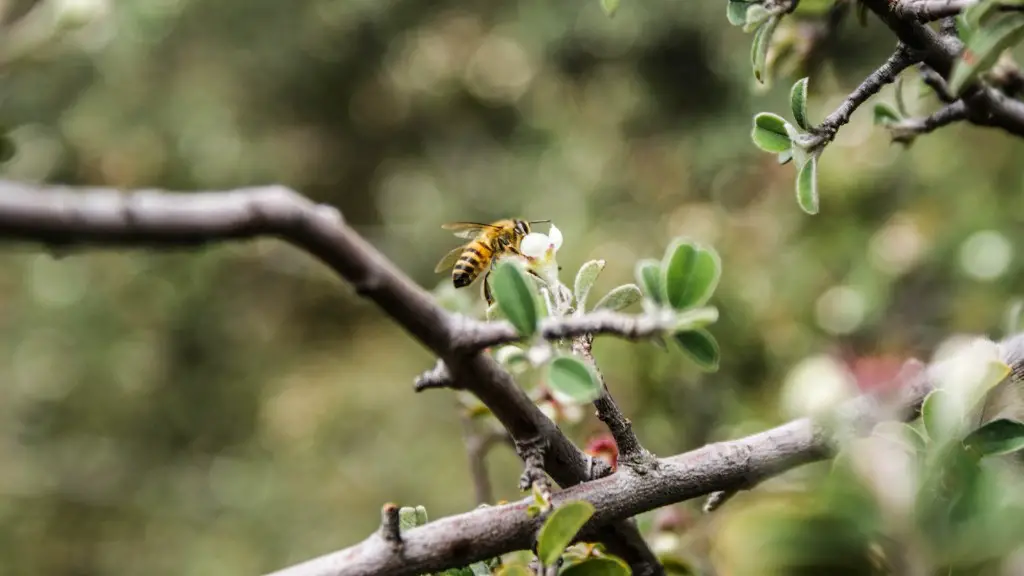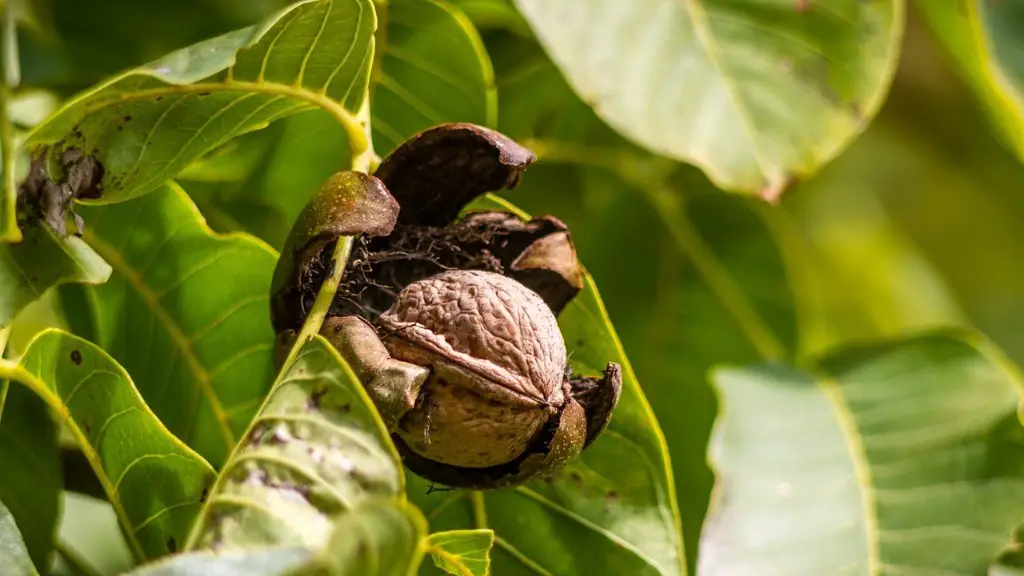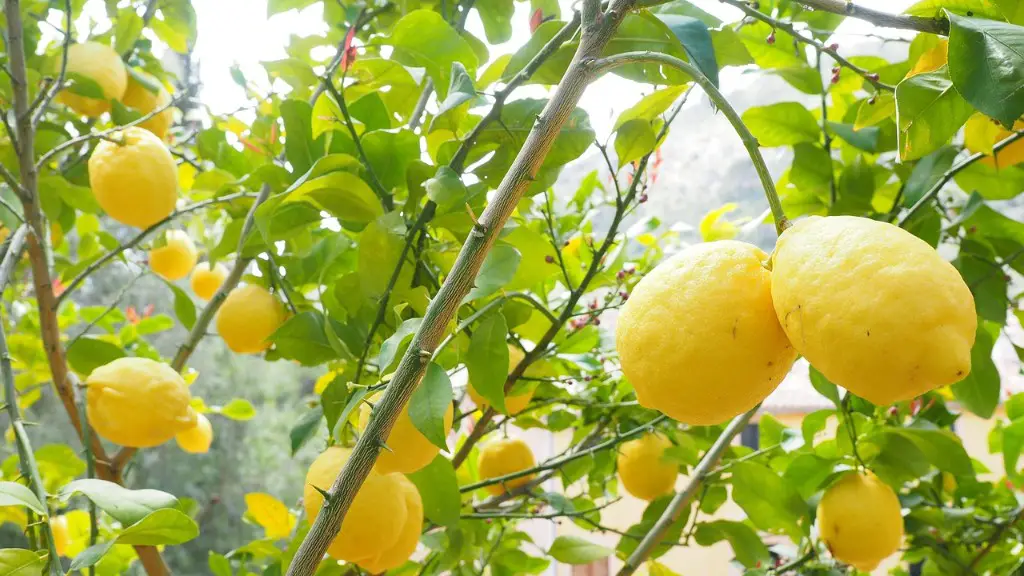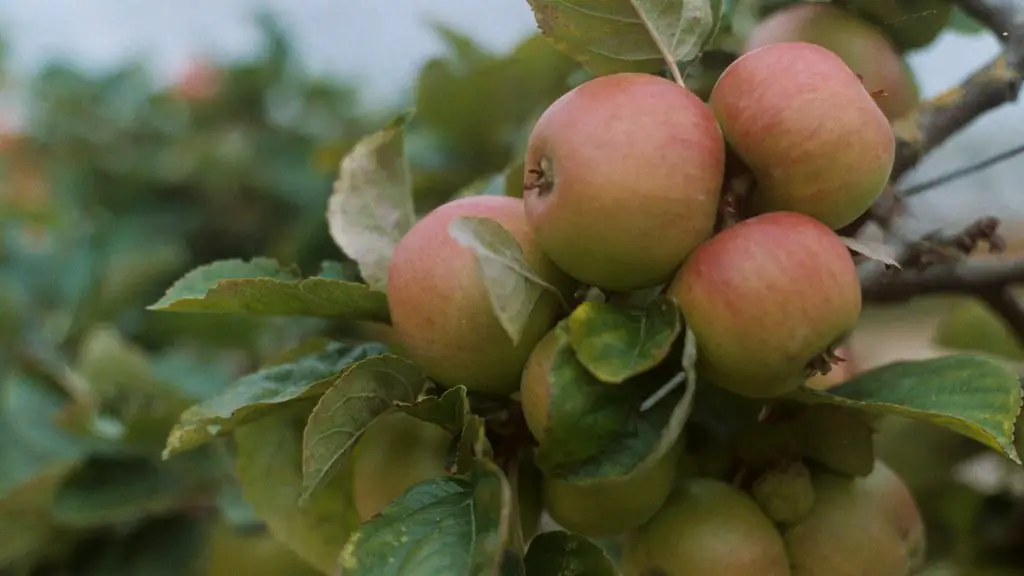Apple trees produce edible fruit, but their leaves are simply a source of nutrition for a variety of animals that feed on them. These can include deer, rabbits, insects, and birds. Each of these animals should be considered when deciding how to manage a particular apple tree.
Deer are some of the largest animals that feed on apple tree leaves. They have the ability to strip a tree of its foliage in a single night and may also cause considerable damage to bark. In order to prevent deer from grazing, they can be excluded through the use of deer-proof fencing.
Rabbits are also found to feed on apple tree leaves. They can be deterred using deterrents like repellents, physical barriers, and spacing plants far apart so they then cannot be reached. It is also important to manage the number of rabbits within an area, as too many could quickly strip a tree of its foliage.
Insects can also feed on apple tree leaves, but as most feed on specific species, keeping the population of these insects in check can be difficult. Insecticides are available to control insect populations, but this may not be practical for extensive orchards or wild trees. Pruning of affected branches may also help to reduce damage caused.
Lastly, birds may feed on apple tree leaves and fruit. If a bird population is large, then the damage caused may be considerable. If this occurs, and is causing unhealthy levels of damage, preventive measures may be taken such as netting and scarers.
Deer
Deer are significant browsers of apple tree foliage and can cause considerable damage as a result. Prevention methods, such as fencing, may be used to limit the amount of damage caused and ensure healthy, productive apple trees. Fencing should be managed after the construction has been completed to check for any potential weak points and to indicate potential areas of damage. Regularly topping plants within the fence can also help prevent deer from gaining access.
Food plots and cover crops, such as clover, chicory and rye grass can also help to attract deer away from apple trees and onto the ground, where they may feed without causing significant damage. Supplementary feeding may also be used and can be tailored to the behaviours and dietary requirements of deer.
If deer are present in high numbers, then trapping and removal may be necessary. This involves catching any deer responsible and removing them from the area. It is important to be mindful of regulations when deciding to do this and to use appropriate traps, as this can minimise the risk of injury to deer.
Mounting electric fence posts around other hardwood trees can also help to protect the base of the tree from damage and prevent it from being toppled over. These would need to be monitored regularly, to ensure the effectiveness and the safety of the deer.
Lastly, deer repellents may also be used to deter deer from feeding on apple tree leaves. These should be applied in the spring or prior to periods of peak browse pressure, as chemical repellents may only last for short periods of time.
Rabbits
Rabbits can be deterred using a variety of different methods and physical barriers, such as fencing and barriers, may be used. If fencing is erected, make sure it is tall enough and has a mesh small enough to prevent rabbits from entering. It is also important to provide adequate cover and shelter, as this can discourage rabbits from entering the area.
If existing rabbits are present, then trapping may be necessary. Traditional cage-trapping and snares may be used and should be applied alongside other management strategies. Trapping may help to reduce the numbers of rabbits present and ensure healthy apple trees.
Rabbit repellents may also be used, and these should be regularly replaced and maintained to ensure their effectiveness. Natural repellents, such as garlic and chilli oil, are available, as are chemical-based repellents, but these should only be used with caution.
It is also important to be mindful of the availability of food sources for rabbits. Providing alternative food sources may encourage them to feed somewhere else and provide fewer problems when it comes to apple tree foliage.
Lastly, removing any debris that is present near the tree, such as logs, rocks, and compost heaps, can also help to discourage rabbits from entering the area. It is important to be aware of any laws that may be in place, as these may dictate what is removed and what isn’t.
Insects
Insects are some of the most damaging pests to apple tree foliage and should be monitored regularly. Identification of the specific species present is essential for effective management. Pesticides may be used to control or reduce insect populations, but should only be applied when necessary.
If insect populations are too high, then physical removal may be necessary. This involves the hand-picking of affected branches or leaves, or vacuuming of affected areas. It is important to be mindful of any safety procedures required, such as the use of protective gloves, as some insects can cause irritation or even pain if touched.
The use of mulches and organic materials can also help to reduce insect populations. Mulching can encourage beneficial insects, such as ladybirds and lacewings, which can control pests without the need for additional control measures.
Pruning of affected branches will also help to slow down the spread of insect damage. This involves the removal of damaged branches, which should then be disposed of correctly. Pruning should be carried out within the season, as this is when most of the damage is done.
Lastly, cultural practices such as soil management and weed control can also help to reduce insect damage. Healthy soils and slopes can help to reduce damage and reduce the potential for insects to gain access to apple tree foliage.
Birds
Birds can be deterred using physical measures, such as netting and scarers. Netting, when applied correctly and securely, can help to prevent birds from entering the area. Scarers may use sound, light, or movement to deter birds and should be regularly monitored to ensure their continued effectiveness.
Removal of food sources, such as spilled bird food, will also help to discourage birds from entering the area. Removal of these areas will also help to reduce potential damage.
Additional planting in the area can also help to divert bird’s attention away from apple tree foliage, as these trees require more effort to access than other plants. This can also create an alternative food source for birds, and improve the habitat for a variety of species.
If birds are present, then bird control specialists may be necessary. These should be consulted, as they may have specialised methods that can be used to prevent damage caused by birds.
Lastly, the use of traditional bird control methods, such as confining birds, may also be applied. This involves trapping and releasing birds to other areas and requires expert knowledge in order to be effective.




